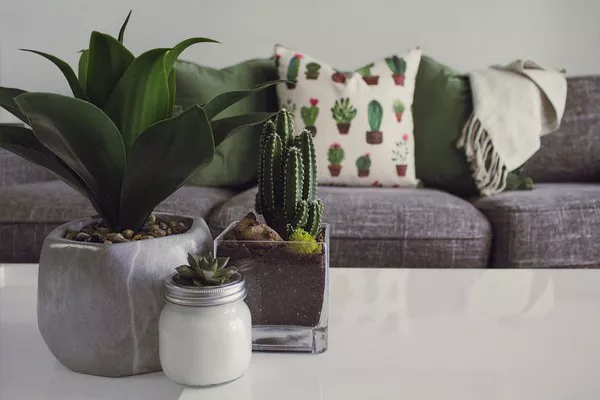Succulents, with their fleshy leaves and stems, have evolved to survive in regions with limited water availability. Their unique adaptations, such as water storage tissues and reduced leaf surfaces, make them well-suited to arid environments. When cultivating succulents indoors, replicating their native conditions is key to ensuring their health and longevity.
Factors Influencing Indoor Succulent Watering Frequency
1. Type of Succulent:
Different succulent species have varying water requirements. Understanding the specific needs of your succulent is crucial in determining how often to water it. For example, Aloe Vera may require more frequent watering compared to the resilient Snake Plant.
2. Indoor Environment:
The conditions within your home play a significant role in determining the watering frequency for succulents. Factors such as temperature, humidity, and sunlight exposure directly impact the moisture levels in the soil.
3. Seasonal Variations:
Succulent care is not a one-size-fits-all approach. Adjusting your watering schedule based on the seasons is essential. Succulents may require more water during their active growing season and less during dormancy.
4. Pot and Soil Selection:
The type of pot and soil you choose can influence water retention. Well-draining soil and pots with drainage holes are essential to prevent waterlogged conditions, which can lead to root rot.
Signs of Overwatering and Underwatering Succulents
1. Overwatering:
- Yellowing or translucent leaves
- Mushy and discolored stems
- Foul odor from the soil
- Mold or fungal growth on the soil surface
2. Underwatering:
- Shrivelled or wrinkled leaves
- Stunted growth or lack of new growth
- Dry and brittle appearance
- Leaves dropping off prematurely
Establishing a Watering Schedule
1. Observation and Assessment:
Begin by closely observing your succulent’s behavior. Take note of the appearance of the leaves, stems, and overall growth. Assess the soil moisture by inserting your finger into the soil up to an inch deep.
2. The Soak and Dry Method:
This popular watering technique involves thoroughly soaking the soil and allowing it to dry out completely before the next watering. This mimics the natural rainfall patterns in succulents’ native habitats.
3. Frequency Guidelines:
- For Summer:
Water every 10-14 days, adjusting based on the specific needs of your succulent and the environmental conditions. - For Winter:
Extend the watering interval to 3-4 weeks, considering the reduced growth and metabolic activity during the dormant season.
4. Use of Moisture Meters:
Invest in a moisture meter to accurately gauge the soil’s moisture content. This tool eliminates the guesswork and provides quantitative data for informed decision-making.
Advanced Tips for Optimal Succulent Care
1. Morning Watering:
Water your succulents in the morning to allow excess moisture to evaporate during the day. Avoid nighttime watering, as damp conditions can contribute to fungal issues.
2. Seasonal Adjustments:
Be attuned to seasonal changes and adjust your watering schedule accordingly. Succulents may enter a period of dormancy in winter, requiring less water.
3. Avoiding Waterlogged Conditions:
Ensure proper drainage in your pots by using well-draining soil and containers with drainage holes. This prevents water from accumulating at the bottom, safeguarding against root rot.
4. Humidity Control:
If you live in a humid environment, succulents may require less frequent watering. Consider using a dehumidifier or placing succulents in areas with good air circulation.
Troubleshooting Common Watering Issues
1. Root Rot:
Addressing root rot involves adjusting the watering frequency, improving soil drainage, and, if necessary, repotting the succulent in fresh, well-draining soil.
2. Edema:
This condition arises when succulents absorb more water than they can transpire. Prevent edema by avoiding excessive watering and providing adequate ventilation.
3. Dehydration:
Revive dehydrated succulents by gradually increasing watering frequency and ensuring the soil is consistently moist during the recovery period.
Conclusion
Mastering the art of indoor succulent care requires a combination of knowledge, observation, and a mindful approach to watering. By understanding the factors influencing watering frequency, recognizing signs of overwatering and underwatering, and implementing advanced tips for optimal care, you can create an environment in which your succulents thrive.
Remember, there is no one-size-fits-all solution, and each succulent may have unique requirements. Regularly reassess your watering schedule based on your succulent’s response and the changing environmental conditions. With a thoughtful and informed approach, you can cultivate a stunning collection of succulents that brings joy and beauty to your indoor space for years to come.


